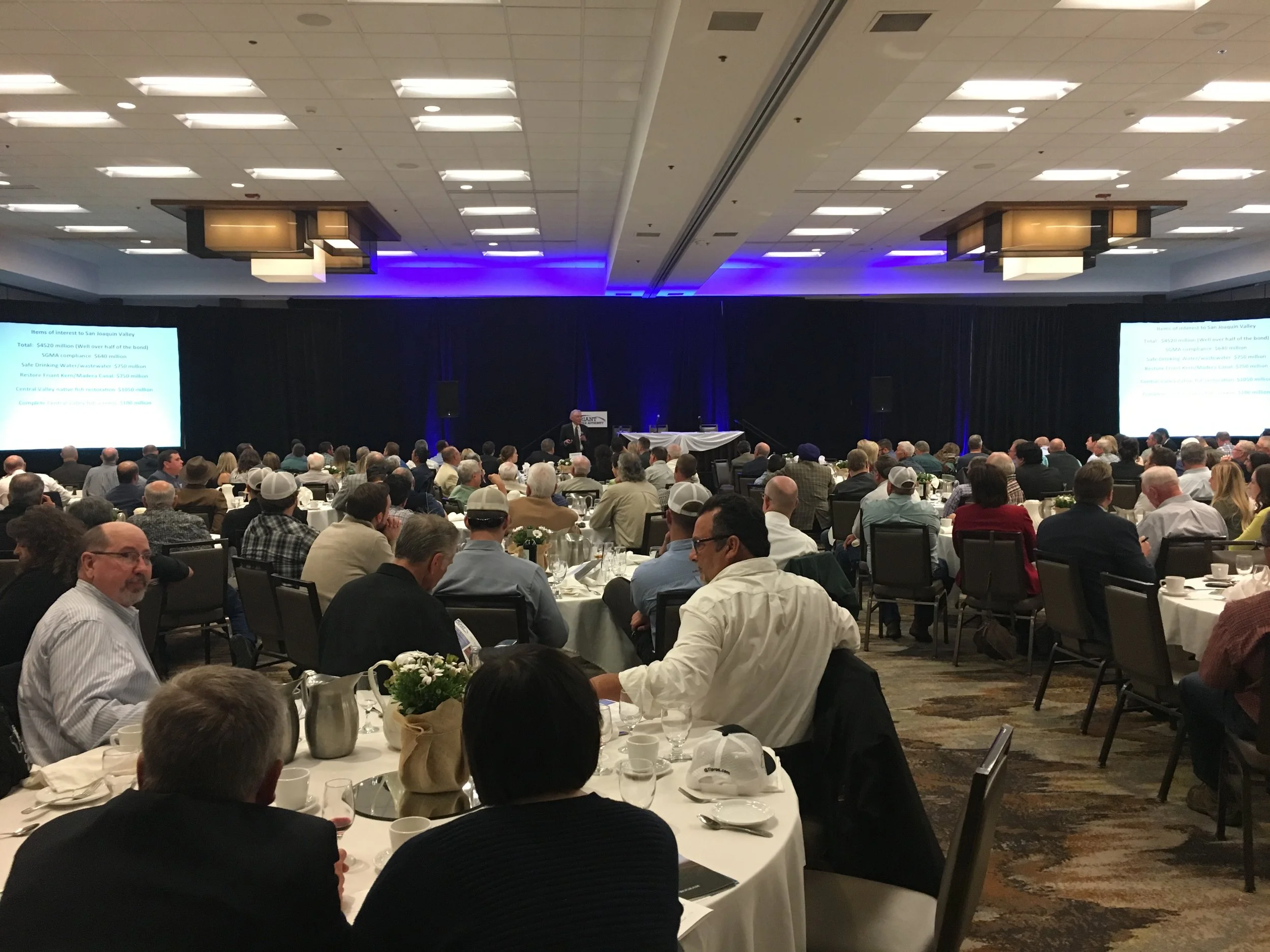MILLERTON LAKE, FRIANT CA. What might have appeared at first glance as a group of friends enjoying an early fall day on Millerton Lake, was actually an important orientation tour set up by Friant Water Authority (FWA) staff. The guests that day were Tim Quinn, Executive Director of the Association of California Water Agencies (ACWA), Jeff Rieker, Operations Manager of the Central Valley Operations Office, Bureau of Reclamation, and Michael Jackson, Area Manager of the South-Central California Area Office, Bureau of Reclamation. The goals of the day’s activities were to one, visit the location for the proposed Temperance Flat Dam, thus the boat; and two, provide an orientation of facilities along the San Joaquin River below Friant Dam and an introduction to the agencies who operate those facilities.
Heading toward proposed Temperance Flat Dam site
Tim Quinn (2nd from left) and Michael Jackson (3rd from left) get the lowdown from Bill Swanson
The proposed TFR Project would be a new reservoir, formed by constructing a new dam within the footprint of the existing Millerton Lake. The TFR would provide an additional 1.26 MAF of water storage capacity on the San Joaquin River that would manage water supplies stored from inflow that exceeds the operational capabilities of Millerton Lake. When lake levels are adequate the best way to visit the proposed dam site is by boat. Representing FWA on the tour was Jason Phillips, CEO, Jeff Payne (Director of Water Policy), Bill Luce and Bill Swanson (consultants). Michael Cervantes, Regional Affairs Representative for ACWA was on hand as well.
The group got a first-hand look at the future location of Temperance Flat Dam, as well as a rundown on how the project would operate in conjunction with Friant Dam. The organization Mr. Quinn leads, ACWA, is a statewide association whose 430 local public water agency members are responsible for about 90% of the water delivered in California.
Jason Phillips and Tim Quinn praised the success of the Temperance Flat trip
“Seeing the proposed dam site is really important. Providing these ACWA and Reclamation managers with some of the proposed operational details of how Temperance Flat would work is also critical to everyone’s understanding of how important this project is to the State.”
“It was exciting to see this project up close. ACWA and Friant worked together closely to include storage in Prop. 1, which was passed by voters in 2014. Thanks to that hard work, the California Water Commission is poised in 2018 to allocate $2.7 billion to CALFED storage projects like Temperance Flat and perhaps others.”
Bill Swanson, Jeff Rieker, Michael Cervantes, Tim Quinn, Jason Phillips and Jeff Payne
The second part of the tour took place along the San Joaquin River, and was intended to provide an orientation of facilities along the San Joaquin River below Friant Dam and an introduction to the agencies who operate those facilities. Presentations at these facilities included information from Gerald Hatler (California Department of Fish and Wildlife); Reggie Hill (Lower San Joaquin Levee District); Randy Houk (Columbia Canal Company); and John Wiersma and Palmer McCoy (San Luis Canal Company).







